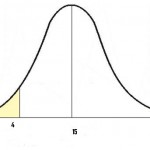Statistics Definitions > Population Mean
Population Mean Definition

- In a school of 1,013 students, the average GPA is 3.1.
- Dogs seen in a certain veterinary practice weigh, on average, 38 pounds.
- Books in one school’s public library are checked out 7 times per year, on average.
In statistics, it’s actually rare that you can calculate the population mean. That’s because asking an entire population about something is usually cost prohibitive or too time consuming. For example, one veterinary practice probably keeps weight records of all the pets that come in the door, enabling you to calculate the average weight of a dog for that practice (i.e. the population mean for that practice). But if you were working for a pet food company who wanted to know the average weight of a dog, you wouldn’t be able to track down all the 70 to 80 million dogs in the US and weigh them. You would have to take a sample (a small portion of the population of dogs) and weigh them. You can then use this figure to approximate the population mean.
Symbol
The population mean symbol is μ.
Formula
The formula to find the population mean is:
μ = (Σ * X)/ N
where:
Σ means “the sum of.”
X = all the individual items in the group.
N = the number of items in the group.
Sample question: All 57 residents in a nursing home were surveyed to see how many times a day they eat meals.
1 meal (2 people)
2 meals (7 people)
3 meals (28 people)
4 meals (12 people)
5 meals (8 people)
What is the population mean for the number of meals eaten per day?
Solution:
Step 1: Sum up all of your X values. This is the Σ X portion of the population mean formula.
1 + 1 + 2 + 2 + 2 + 2 + 2 + 2 + 2 + 3 + 3 + 3 + 3 + 3 + 3 + 3 + 3 + 3 + 3 + 3 + 3 + 3 + 3 + 3 + 3 + 3 + 3 + 3 + 3 + 3 + 3 + 3 + 3 + 3 + 3 + 3 + 3 + 4 + 4 + 4 + 4 + 4 + 4 + 4 + 4 + 4 + 4 + 4 + 4 5 + 5 + 5 + 5 + 5 + 5 + 5 + 5 = 188.
Note: You could also sum this with the following formula:
(1*2)+(2*7)+(3*28)+(4*12)+(5*8)=188.
Step 2: Divide your answer to Step 1 with the number of items in your data set. There are 57 people, so:
188 / 57 = 3.29824561404
That’s an average of 3.3 meals per person, per day.
The population mean is 3.3.
Population Mean vs. Sample Mean
Figuring out the population mean should feel familiar. You’re just taking an average, using the same formula you probably learned in basic math (just with different notation). However, care must be taken to ensure that you are calculating the mean for a population (the whole group) and not a sample (part of the group). The symbols for the two are different:
Population mean symbol = μ
Sample mean symbol = x̄
Next: Difference Between a Statistic and a Parameter
References
Beyer, W. H. CRC Standard Mathematical Tables, 31st ed. Boca Raton, FL: CRC Press, pp. 536 and 571, 2002.
Agresti A. (1990) Categorical Data Analysis. John Wiley and Sons, New York.
Vogt, W.P. (2005). Dictionary of Statistics & Methodology: A Nontechnical Guide for the Social Sciences. SAGE.
Wheelan, C. (2014). Naked Statistics. W. W. Norton & Company